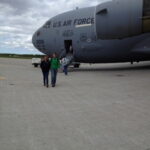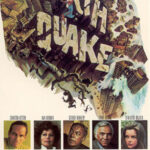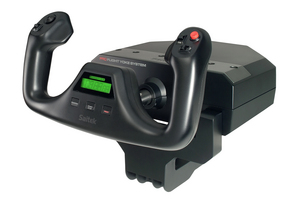The crying baby on the airplane is the punch line of many jokes and horror stories about travel. It’s less funny when it’s your own baby. Combining a small person who can’t talk with the unpredictability of airline travel would seem to be a recipe for disaster. However, if you are prepared, flying with babies is easier than you would expect, and far easier than traveling with toddlers and preschoolers. Babies are lighter to carry, far less mobile, more likely to sleep through the flight, and if they are awake, simpler to entertain. Here are some necessities that will help your trip go more smoothly.
The first essential is diapers. Pack at least one diaper per hour of flying time plus three or four extra. Disposable diapers are small, lightweight, and worth their weight in gold for travel. Pack plenty of baby wipes as well, a small container of hand sanitizer, plus a handful of plastic bags. Bagging the diapers before you toss them is considerate of your fellow travelers. Remember flight attendants who serve food shouldn’t have to handle dirty diapers.
To go with the diapers, make sure you have two complete spare changes of clothing for baby in your carry-on, and a change of top for Mommy or the main caretaker. Airplanes tend to have an explosive effect on baby digestive systems – what we referred to on our trips as a “Level 5 Biohazard Spill with Environmental Contamination.” Pack the clean outfits in plastic bags. If they need to be used, you’ll have a bag to put the dirty outfit into.
Most airlines are charging extra for in-flight meals these days and don’t have breast milk or formula on the menu. Plan to pack your own, and bring enough bottles for the length of the flight plus one or two extra. If you’re feeding expressed milk, La Leche League states that freshly expressed milk is good at room temperature for up to 6 hours or refrigerated for up to 8 days. Breast milk and formula are exempt from the 3-ounce rule, but must be declared to the screening official and hand inspected at the security checkpoint, according to TSA guidelines. If you are exclusively breastfeeding, a blanket can be useful for draping or propping. Airplane seats are not designed for easy and ergonomic breastfeeding, even in business class! For formula feeders, the minipacks of instant are convenient. Babies who can eat solids may enjoy cheerios or other finger food, offered one at a time as a game and time-killer.
Plan to purchase a seat for the baby. While many airlines allow babies and children up to age two to sit in a lap, it makes for a very long journey. Baby can sleep in the car seat and you can stretch your arms. The extra seat also provides an alternative spot for changing, and more space for breastfeeding. According to the FAA, an approved car seat also provides more safety in case of turbulence or emergency. Check the sticker to make sure it reads “certified for use in aircraft”. Baby will have to sit in the window seat. Most airlines offer a discount on infant seats.
The final essential is something for baby to suck on to encourage swallowing. While pressure changes in modern airplanes are less than what they were 20 years ago, a baby may still react. Whether it’s a bottle, breast, pacifier, or clean finger, bring a variety of suckling objects for the baby. A pacifier or finger can be especially useful during takeoff and landing when baby is strapped in the car seat and breastfeeding is impractical. Of course, if the baby is asleep, just enjoy it! They will swallow in their sleep and pop their own ears.
As an extra, keep your sense of humor and positive attitude handy. Flight attendants are more likely to help you when you smile and say “please.” Irritated fellow travelers may be more forgiving if you look serious and say, “I’m doing the best I can.”When your baby is kicking the businessman next to you as he noisily breastfeeds, crying loudly as the plane waits on the ground for the mechanics to replace the part, or spitting up on your shirt at 37,000 feet over the Rockies, remember that this too shall pass. In thirty years you can tell your grandchildren about the time daddy was a baby and you flew with him across the country. Grin and bear it, and may all your connections be smooth!
“What are the LLLI Guidelines for Storing My Pumped Milk?”, La Leche League International
Important Information on Traveling With Formula, Breast Milk, and Juice,” TSA.gov
Child Safety on Airplanes”, faa.gov




